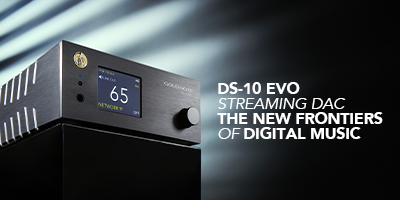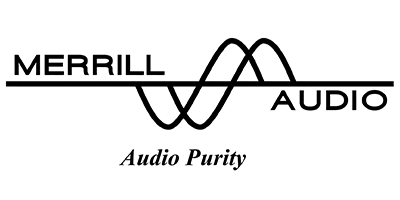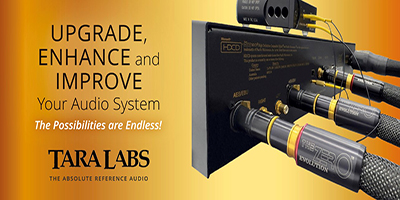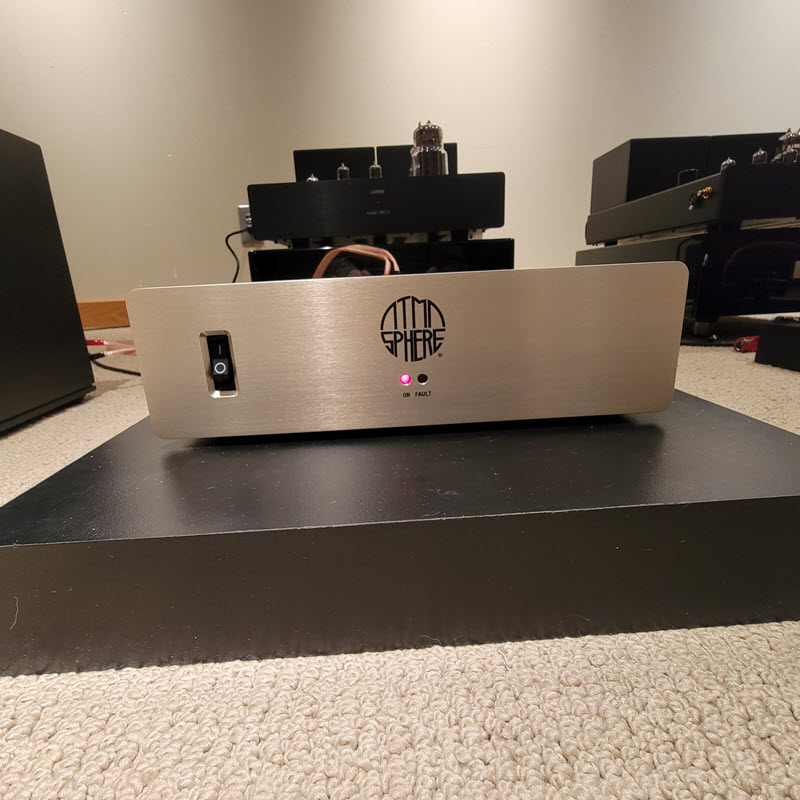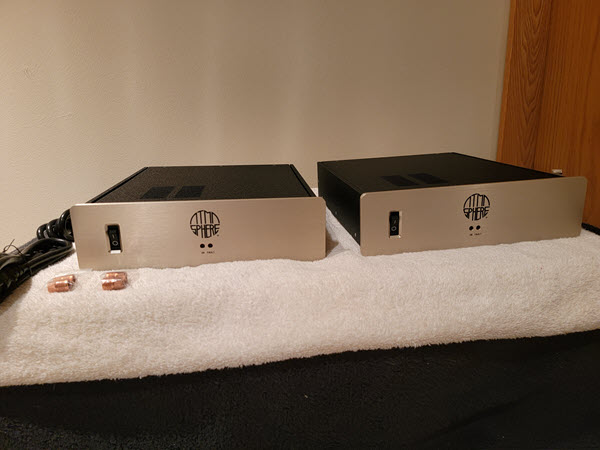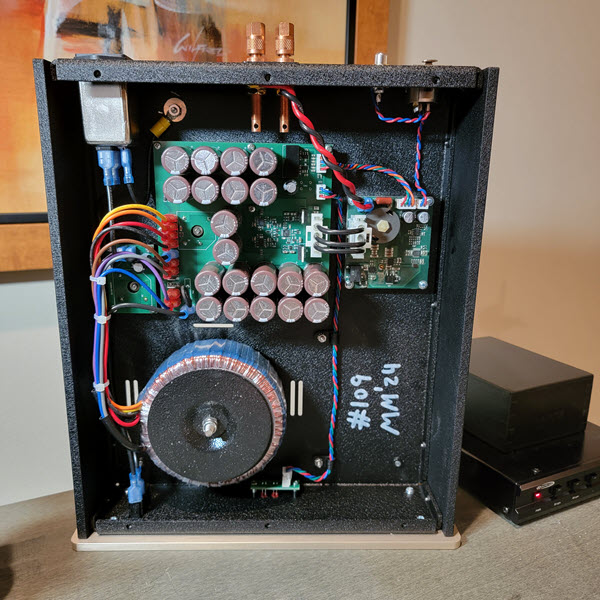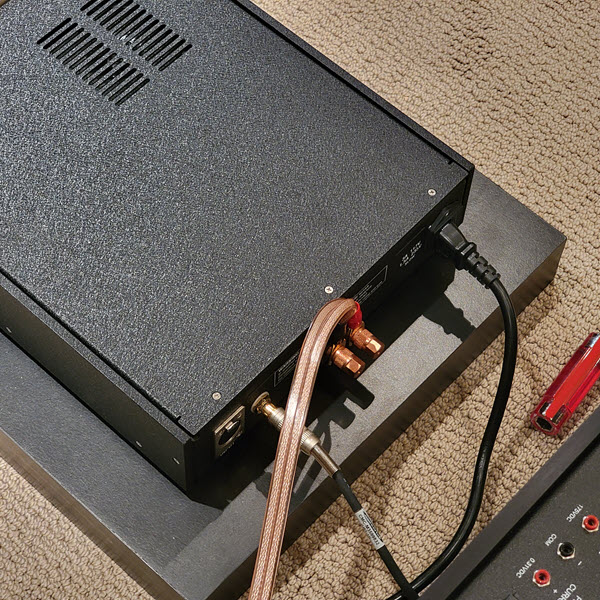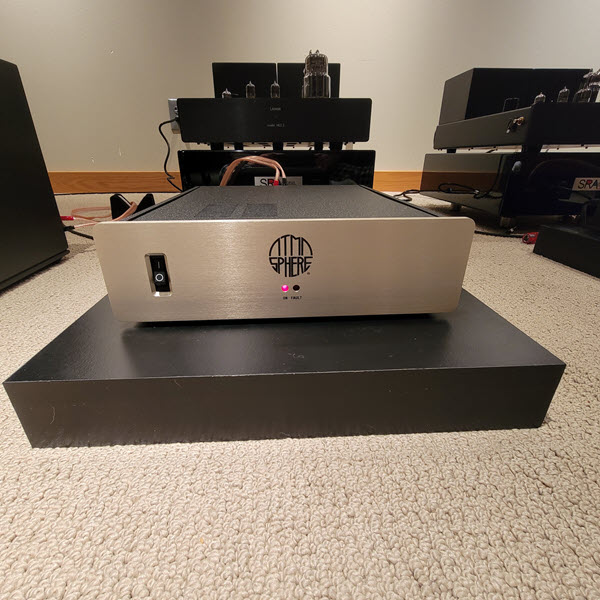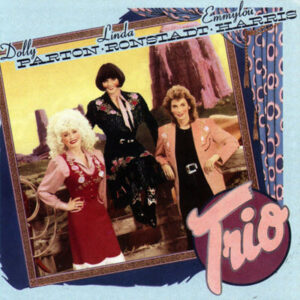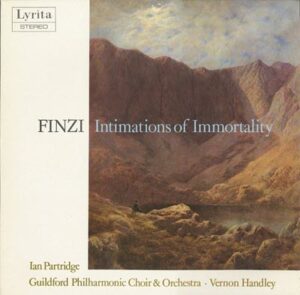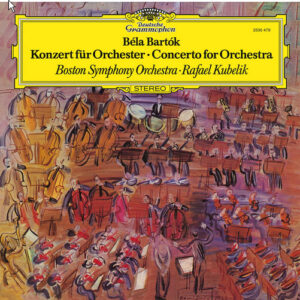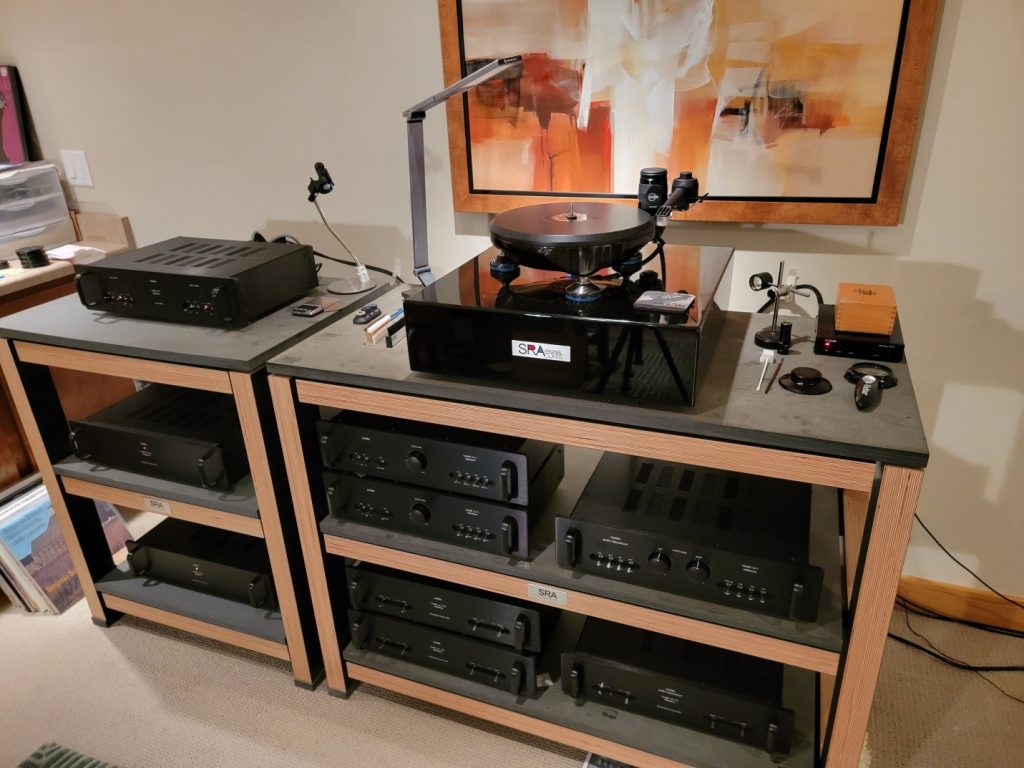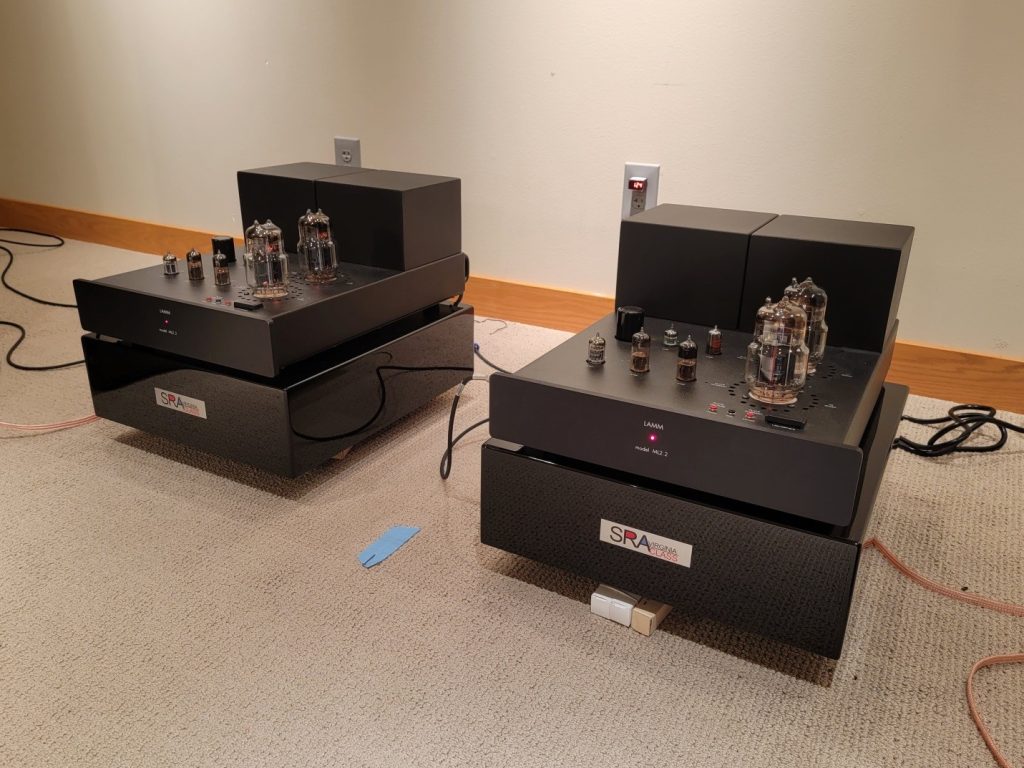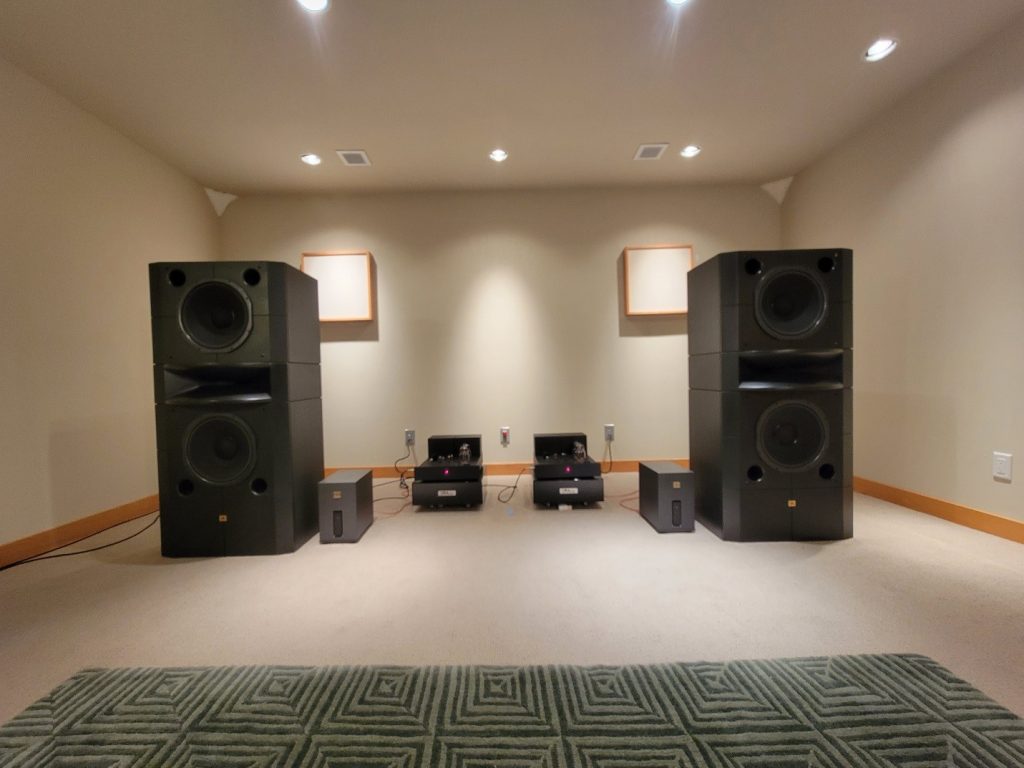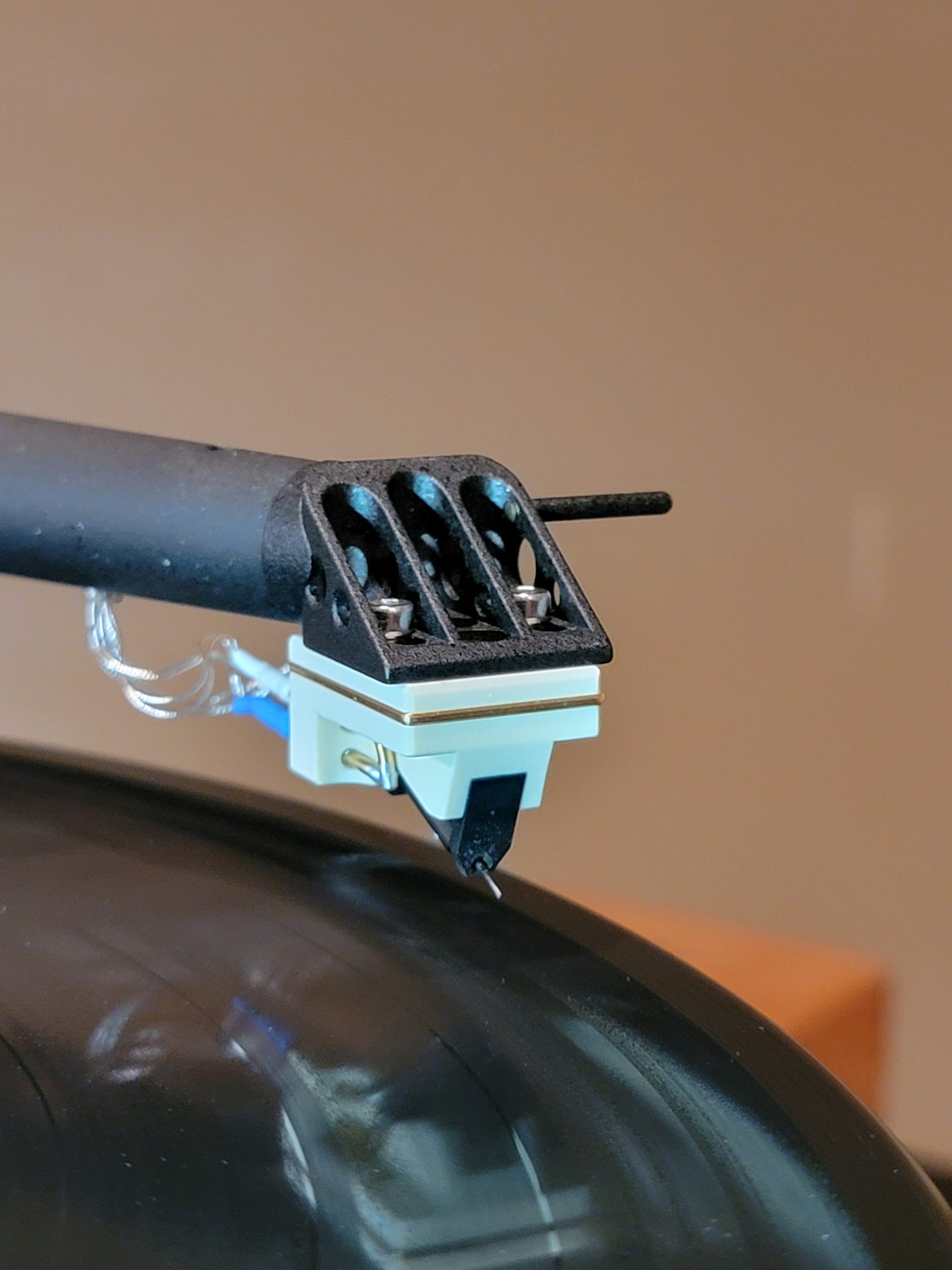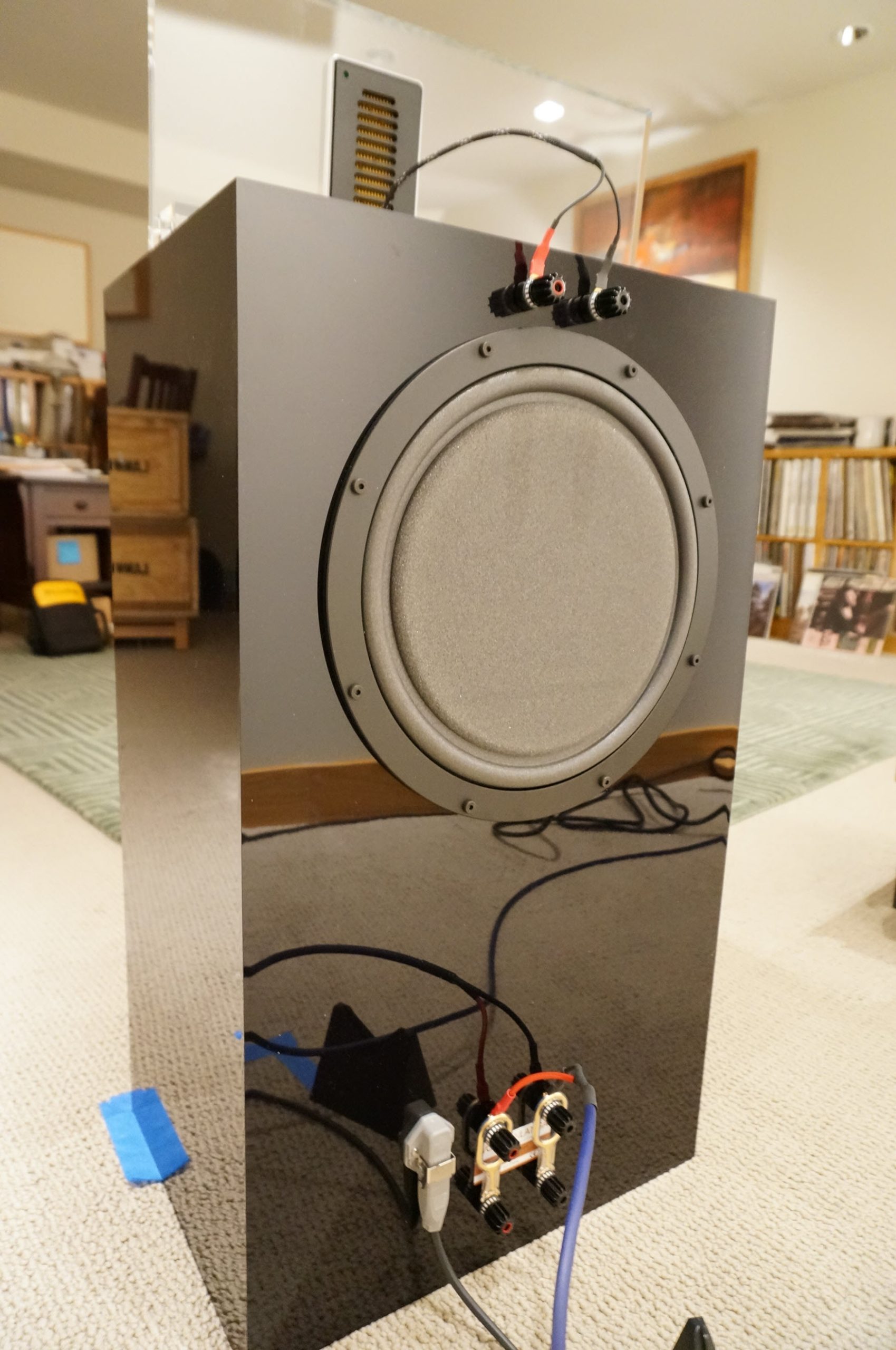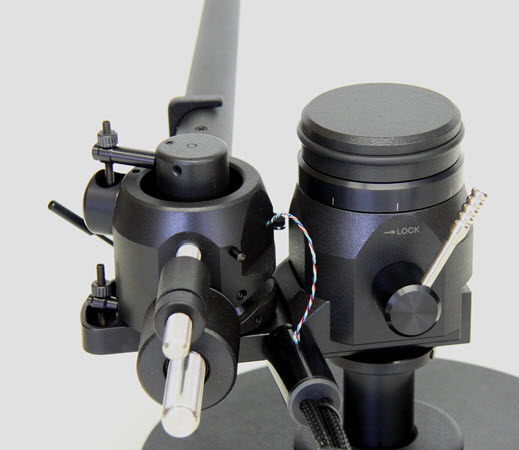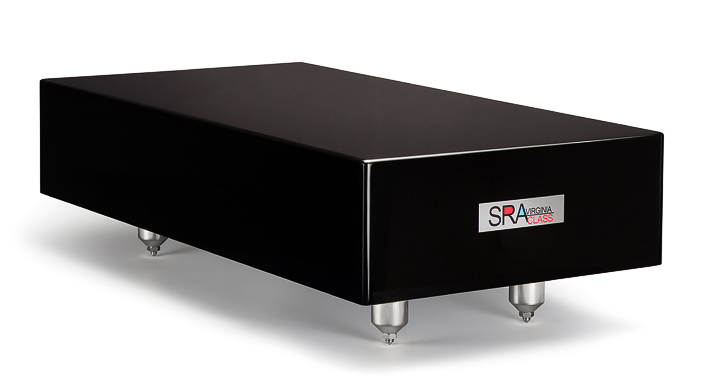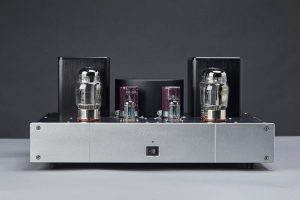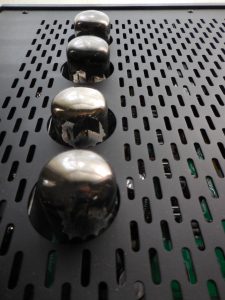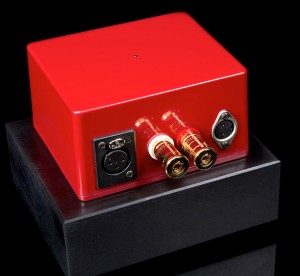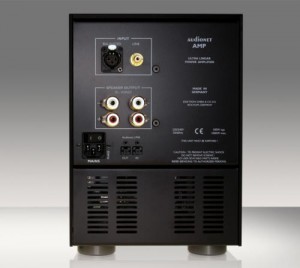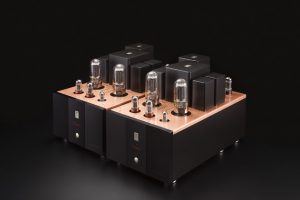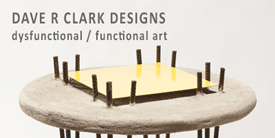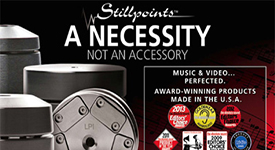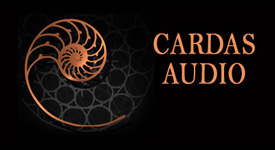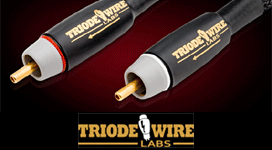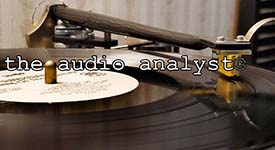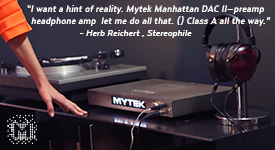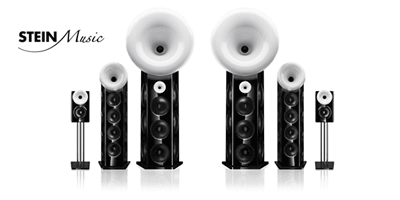Preparing for this review I asked Ralph Karsten, principal at Atma-Sphere, if he planned to make a Class D preamplifier. He responded "There's not much point in a Class D preamp since you don't get the same advantages that you do in a power amp."
The obvious question becomes: what are the advantages of a Class D power amplifier? From research my take on this question says that the primary advantage of a Class D amp is not about audio quality. Foremost in rationale may be its higher efficiency of operation—it uses considerably less energy than Class A or even Class A/B. Because of its efficiency it produces less heat and does not require the massive heat sinks found on less efficient amps. It does not require big transformers and capacitors. That means you can fit one in a much smaller and lighter package.
When the Atma-Sphere Class D was released in 2022 there was general agitation among tube-o-philes who learned that Atma-Sphere released a solid state amplifier after being a venerable tube amp maker and advocate for decades. My goodness, why would he do such a thing? The answer is: forward thinking. Ralph told me he is convinced that tube power amps are on borrowed time. He sees the electrified musical instrument market—a much larger segment of tube users than high-end audio—moving toward Class D. "Class D can be quite a boon if a 100 watt guitar amp only weighs 15 pounds when you're a roadie loading out of a venue at 3am!" A result of this shift will find tube manufacturers eventually losing a major portion of their market and thus produce fewer tubes. "If you can get the quality of sound that you find with push-pull amps or SETs or Atma-Sphere's own OTLs, with no worries about finding tubes, no heat and small size, it's a lot harder to justify a tube amp unless it's nostalgia or the like."
Fresh out of the box, pre-install.
Let's briefly review Class A and A/B audio amplifiers to understand how the Class D topology is different.
Class A and A/B solid-state amplifiers use banks of output transistors in linear mode to create an up-scaled copy of the input voltage. Their combined power produces the amp's overall output. When operating, each output transistor in a 100-watt solid-state Class A amp runs at full power all the time whether music is playing or not. Bias current flows through the output stage transistors to keep them turned on but is not delivered to the speaker. Class A amplifies both the positive and negative voltage of the signal's AC waveform, yielding roughly 25% efficiency while their remaining power turns into heat.
Class A/B amplifiers can run at roughly 60% efficiency. One transistor amplifies the positive half of the AC waveform, another transistor the negative half. A bias current keeps these transistors mostly on (more than half the time) although only one transistor conducts for half the signal cycle. The 100 watt Class A/B may pull 20 watts until it needs to pull the 100 watts then will go back down to 20 watts. The switch between halves is not abrupt as the bias current keeps both alive—though not as much bias current as used in Class A. Implementations can vary somewhat, so this is a generalized description.
Class D amplifiers continue to improve since the introduction of the design in the late 1950s. Nowadays some approach 90% efficiency because of significantly lower power consumption and less power dissipation as heat than Classes A and A/B. This may be Class D's primary virtue.
A Class D amplifier is a switching amplifier because it quickly switches its transistors fully on or off. A minimal bias current—much less than is used in Class A or A/B—allows a smooth transition between the on-off states. For its own Class D amp, Atma-Sphere uses Gallium Nitride (GaN) Field Effect Transistors that are more efficient, lighter weight and smaller than silicon-based transistors (e.g. MOSFETS). These can switch on-off quicker (1-2ns) than traditional amplifier transistors (20-50ns). The switching frequency is so high that a dead time circuit introduces a small pause between on-off to ensure two transistors don't conduct at the same time.
Another reason Atma-Sphere chose to go with the GaN FET semiconductor is their absence of leads (wires leading into them). According to Ralph, this avoids parasitic inductance—that tiny inductance that exists in wires connecting to a component—which can cause a Class D circuit with a different type of transistor to radiate switching noise. Use of these transistors contributes to "… a sold state amp that has all the smoothness in the mids and highs that you expect from an excellent tube amp…"
Traditional with Atma-Sphere, the build technician initials his work.
So, generally, how does it work? A Class D amplifier compares its input audio signal against a reference waveform to generate a pulse train where the width of the pulses corresponds to the amplitude of the input signal. The result is a square wave or a Pulse Width Modulation (PWM) replica of the audio signal. The width of a pulse determines the time a transistor is on. The Atma-Sphere Class D amp generates its own reference waveform (versus taking it from an external clock) through a technique known as self-oscillation where application of a large amount of internal feedback introduces a phase shift sufficient to cause the current to oscillate at a very high frequency.
The generated PWM signal rapidly transitions between high and low voltage—one result of which is the generation of high frequencies (noise) beyond the ability of a listener to hear. The signal goes into a low-pass filter that allows only lower frequencies (the audio signal) to pass through as output. As the pulse width changes in the square wave, the average voltage across the filtering capacitor changes proportionally. This recreates the original continuous audio sine wave form as output.
Build, Use and Context
The size of an Atma-Sphere Class D amp is 13"D x 11"W x 3"H and it weighs about 14 lbs. At idle it consumes 5 watts per channel and is barely warm to touch after hours of use. But light weight and small size do not mean small output. Output power is 100 watts per channel into 8 Ohms, 200 watts per channel into 4 Ohms. The review pair came with a 6ft. 16AWG Well Shin power cord.
It was a surprise to see a solid state 200 watt amplifier fitting into such a small package without heat fins. Given their size, absence of bling and availability in three colors (black, silver and champagne) these amps can fit unobtrusively into almost any home audio scenario.
Unlike some manufacturer's Class D models that license off-the-shelf modules, such as Hypex NCore or Purifi, and then add their own input stage, here are amplifiers designed and built by Atma-Sphere in Minneapolis.
Setup is simple. The Atma-Sphere Class D provides balanced and RCA inputs. The kit includes shorting jumpers for the XLR inputs in case there is a hum caused by a preamp with sketchy grounding. I'll note the little dears are so short that unless you situate them with their rear hanging over the edge of a shelf you may need to attach spaded speaker cables to their copper Cardas binding posts from the top. The only control is an on-off rocker switch on the front panel where a small red LED signal indicates they are on; next to that there is a light labeled ‘Fault' which I never saw lit.
To see the equipment in my review system, click on my name at the top of this review.
The Atma-Sphere Class D amps require considerable break-in time. Ralph told me they need 450-500 hours to reveal themselves. My own experience had break-in around 540 hours. I dug out my Ayre C-5xe disc player from storage (still works fine) and put it to use for break-in duties. (I was not going to use up 500+ hours on a cartridge for break-in.) Frankly, it was a bit of a slog. I'd play a single CD on repeat for 2-3 days in a row, listen a bit, wait a day and go again with different music. I left the amps turned on 24/7 – they only draw 5 watts at idle—which helps a little with break-in. One lesson is this: be patient before making any early judgement about how they sound. Break-in is real. Out of the box and early on sonics were mildly disappointing; at 250 hours resolution began to take shape, upper frequencies were thin, bass was a bit of a muddle, tonality was okay. But I could hear there was potential. I started feeling that potential realizing itself around 400 hours. Patience serves them well.
Atma-Sphere offers the Class D amps for a 6 week in-home audition—that's a touch over 1000 hours.
Sound
All audio amplifiers have distortion, some more, some less, and there is the claim that the sonic character of an amplifier is a function of its distortion spectra. Karsten is such a talented engineer, I believe he can design an amp to sound pretty much any way he wants. If you have heard Atma-Sphere tube amps and preamps (which in the past I owned and reviewed) you have an idea of his target sound. Ralph has refined his tube products for decades. With speakers that are easy to drive, say 8-16 Ohms, 92+ dB Sensitivity, his Output Transformer-Less (OTL) tube amps are quite revealing with a see-through clarity throughout the frequency extremes, a relatively neutral character and overall low distortion.
I wasn't sure what to expect from his solid-state Class D amplifiers but I was pretty sure their sound would not be orthogonal to his Class A tube units. The Class D does have a transformer but doesn't have any tubes.
My approach to reviewing is to listen to the review product in my system, take notes about the music I hear and apply audiophile words as that is what most readers expect. I research my listening choices and sometimes will use a musical score to understand them better. My ultimate reference is not other gear but the sound of live acoustic music.
To generalize the Atma-Sphere Class D's basic character, they are warm, smooth, and clear, while having lower frequency strength, excellent dynamic contrast and low distortion. I heard no brightness, hardness or harshness. This can attribute to the designer's use of sufficient 2nd and 3rd order harmonics to mask higher-order harmonics and intermodulation distortion. While you may pick out both tube-like and solid state elements, if I was listening blind I don't know if I could say definitively if the Atma-Sphere Class D were tube amps or solid-state. Turn up the volume and you'll find they are very very quiet—that gives them away.
To pick nits, when I reviewed my listening notes I found a consistent mention of slightly diminished leading edge articulation. Call it the difference between a more incisive attack (not to be confused with harshness) and a softer attack, but not rolled off—pizzicato strings still sound pizzicato. This softer attack can sometimes smooth out a sense of texture across an orchestra or group with multiple voices playing concurrently and it can (not always) lessen the sense of the first bite of string on bow, tongue on reed or pick on guitar.
The amp's warmth is dry warmth, not slushy or wet warmth. While they play romantic music quite nicely, these are not romantic sounding amplifiers. Depending on the music, there is a nice sense of flow across notes although it is not quite as liquid as certain tube amplifiers I've heard.
Sometimes fewer instruments or voices are helpful for evaluation. I listened to the Végh Quartet out of Hungary perform Beethoven's Opus 131 on the Valois label (CMB 83). This performance offers a naked lifelike rendition of one of Beethoven's final compositions and the music is unlike any of its period—so much so that Beethoven feared his contemporaries were not prepared for it. It might be mistaken for string music from the mid-20th Century—modern, somewhat angular but without dissonance.
Right from the opening notes I hear dexterity, strength and clarity from the Végh group. Their playing evinced a forward drive and the confidence of a group having played together over time. The music itself is purposeful and challenging. The Class D amps had an easy time controlling my JBL M9500 speakers. The four musicians lay out in a line whose ends slightly curved toward the listener. Here, positioning on the soundstage was simple and obvious. While each musician was in his own pocket of air, there was little to no ambience from the venue context.
Each of the strings (two violins, viola, and cello) had an open character but there was neither fuzziness on the low notes nor harshness on the highs. The sound was clear and well balanced, a bit toward the warm but lacking the romance of, say, the Quartteto Italiano on the same music. I heard little rosiny character from the attack of bow on higher strings though a bit of that from the cello. Resonance from interior sounding chambers lent a woody character. Decay was a touch foreshortened perhaps due to the absence of ambience in the recording studio.
Next I played several cuts from an album I mention in other reviews because I know it well: the 1987 Grammy winning album Trio with three female stars, Dolly Parton, Linda Ronstadt and Emmylou Harris (Warner Brothers 9 25491-1). This LP includes country and pop tunes and some of the finest session men in the business. Produced to a very high quality by George Massenburg and mastered by Doug Sax, this is a fantastic album if you enjoy talented female harmony with a touch of gospel and country twang.
On Phil Spector's "To Know Him Is To Love Him" I hear gorgeous vocal harmony with separation and blending of voices even though the singers layer together in the middle of the soundstage. (If they recorded each in their own booth, the mix was excellent.) Slight variations in tone and diction let me easily pick out the unique voice of each singer. The tune features an array of classic country music instruments (pedal and lap steel guitars, zither, fiddle, dulcimer, etc.) Delivery was smooth as every instrument had its own unique timbre and warm tonality. The music had a nice easy flow. Dynamic contrast was excellent as instruments came to the fore and back. I heard a faint glaze of applied post recording reverb.
On "Wild Flowers" the drummer uses a technique where he lays one stick on the metal edge of the drum with the other end of the stick on the drum head itself. He then taps that stick with his other drumstick to create a woody rim-tap beat. I heard different pitches depending on where he strikes the laid-down stick. Here is a small detail in an overall mixture of multiple instruments, preserved and delivered by the Atma-Sphere Class D amplifiers.
A brief example of the amp's overall clarity: on the song "Making Plans" written by Dolly and Porter Wagner there are the lines:
You're making plans to forget me
I'm making plans to miss you
I'm getting ready to grieve.
Listen closely to what Dolly does with the single word ‘grieve.' She offers delightful tonal modulation across that one syllable word that lets your heart feel the angst of her anticipated grief. Elsewhere she can vary a quaver in her voice with control. Dolly has uncontrived natural talent with grace and style.
I have one more of these vignettes to share that I sometimes use as a test for review components. A few amps reveal it and some don't. This is from the tune "It Feels Like Rain" on Aaron Neville's album Warm Your Heart (A&M/Classic Records/ RTH5354.) On Neville's right there is a line of female backup singers with a lone male bass voice at the end of the line closest to the listener. Some people say Willie Greene Jr. can hit notes below the bottom C on a piano—that is an astonishing 32.7Hz if true. (More likely his bottom is D2, ~74Hz.) Willie sings the single word ‘rain' very softly and it is the richest and deepest male bass voice I've heard. You will need to listen for it. The Atma-Sphere Class D pulls it to the surface. The only other amps I've heard do this are the Grommes 360 tube monoblocks and Atma-Sphere's own MA-1 which I recall as slightly more resolved. The Atma-Sphere Class D reveals multiple similar small musical vignettes sprinkled across this and other albums.
Next up is British composer Gerald Finzi's Intimations of Immortality on the Lyrita label, SRCS 75. This is on the original "HP List." Lyrita specialized in recording 20th Century British composers, with those up to 1979 exclusively pressed by Decca—I find it a top quality label though subsequent CD re-issues can be a bit dicey.
This composition includes nine of eleven stanzas of William Wordsworth's poem titled "Ode on Intimations of Immortality from Recollections of Early Childhood" put to music with tenor soloist Ian Partridge, the Guildford Philharmonic Choir and the Guildford Philharmonic Orchestra conducted by Vernon Handley—choral music with all the elements appropriate to evaluating equipment. The lyrics express the notion that the soul pre-exists the body; young children are able to find the divine in wondrous nature but begin to lose their vision as they mature. Finzi gives us a fusing of metaphysical thought with lyrical feeling across a wide range of changing moods. It's a lovely composition even if you don't buy the mysticism. The LP includes a copy of Wordsworth's work.
"Resolution" is a contentious word in the audiophile lexicon. One example of its meaning is words from a choir heard clearly. I've listened to Intimations in several different systems and the Atma-Sphere Class D amps offer some of the best resolution of the layered radiating choral rounds that I've heard. The amps ability to hold intact the timbre of multiple voices (and instruments) across varied dynamics is a strong suit and is indicative of their low noise floor. Listen to the solo tenor and the female choir sing together the words "waters on a starry night are beautiful and fair." I hear how their tongues articulate the "t" in "night" then they draw breath. Some voices coming to the fore are a bit brighter, some sing darker with a chesty or more throat-full voice. The psycho-acoustic effect is a realization of a living group singing in unison—a combination of multiple voices each with a unique timbre.
At times the pace quickens gradually with dynamic ebbs and flows, from ppp to pp within a phrase and then back down pp to ppp, as Finzi's score notes Meno Mosso—less quickly, or Poco Stringendo—accelerating and intensifying. Here is the Class Ds micro-dynamic range. Listen closely and these subtle and ardent changes in dynamics and tempo are there for the having. Pull your focus back and you'll find the flow of the choir and orchestra as a whole. Perhaps because Lyrita made the recording in Guildford Cathedral I did not have the sense of an orchestra in a hall with back and sidewall reflections but I did hear air amongst the choristers. And, psycho-acoustically, I could "hear" how the choir stood layered in rows rising higher front to back.
During builds to climaxes, the composer likes to bring in percussion to create high-lights and accents. He includes a wealth of percussive instruments in his composition: tympani, along with only two percussionists for xylophone, cymbals, triangle, glockenspiel, castanets, tambourine, tam-tam (gong), bass drum, snare drum and others. One thing I notice about Lyrita recordings is the top-notch job they do in capturing percussion. As do the Class D amps reproducing them, albeit sometimes with a slightly less emphasized leading edge. The Atma-Sphere Class D made it easy to distinguish, say, the lower pitched wooden xylophone from the higher pitched metal glockenspiel.
One more—A concerto is a composition written for a single or a couple of solo instruments and an orchestra. Examples might be a violin concerto or a piano concerto. The composer may have the orchestra accompany the soloist or he has them play off against one another in dialogue. Sometimes we find the will of the conductor struggle against the will of the soloist. In Concerto for Orchestra composer Béla Bartók innovates something different, a concerto for an entire orchestra where he offers individuals brief solos and features entire sections accompanied by or in dialogue with the remaining orchestra. This collection of highlights makes for an interesting piece for assessing stereo systems and components.
I played the version from Deutsche Grammaphon's "The Original Source Series", with Rafael Kubelik conducting the Boston Symphony, DG 2350 479. I find this LP among the very best of the TOS offerings.
Strings with timpani backing enter the 1st movement with a sense of stern foreboding. Lower bass strings sound almost funereal, dirge-like, and then turn increasingly feral. Brass enters with a better sense of attack than I heard on the other recordings. Right in the opening measures we hear a very quiet bolt of violins striking at the heart of the string bass and cellos with menace.
Bartók calls upon these violins for high technique, to show off the talent of the musicians. The score reveals multiple slash marks through the stems of their notes. These slash marks instruct the musician to play with a rapid repetition of the note and/or alternate between two notes with the number of slashes indicating the speed of repetition; the more slashes the more strikes within each note's duration. Drawing the bow between two different notes rapidly (we see 4 slash marks) is very difficult. The sonic effect is a one or two tone tremolo and here the dynamic is marked as pp, pianissimo—very softly, requiring more technique. The Class D amps resolve this well. I heard the different notes as the bow jumped between them. On this piece the effect is both startling and eerie—not unlike the deep space sounds on Holst's "Neptune" from The Planets. It happens quickly then it is gone. The amp's capacity for clarity and detail is their strong suit. Ralph will tell you this is the product of low distortion.
Throughout the concerto I heard internal spatial resonance from a variety of drums along with the decay of cymbals, gong and triangle even as they played in the background. When called upon, the Class D amps deliver a smooth and bold orchestral sound as they easily drove my 96dB speakers. High frequency trumpets at high dynamics lacked any peaky glare. The Bartók piece demonstrates the amp's wide dynamic range.
The second movement, referred to as the "Game of Pairs", features pairs and combinations of various woodwinds along with two trumpets. So first we hear two bassoons together, two oboes, two clarinets, etc. and then combinations, two clarinets with two oboes, two flutes with two clarinets, three bassoons, etc. I find it sometimes a challenge for gear to distinguish multiple instruments in the same family from one another—say an oboe and a cor anglais each with its own unique but similar timbre, or two flutes playing the same notes. The Class D amps let me follow these passages differentiating between multiples of the same instrument and combinations. For all the instrument combinations and the constant shifts in dynamics, the piece flows well. Every section gets their due as meted out by the score.
Here is a Class D phone recording of Movement 1 of Bartók's Concerto for Orchestra. The music is very quiet at the beginning and later the dynamic contrast is substantial. You'll need more than a phone or laptop for listening. If you don't like system videos, just skip this.
Compare and contrast
Without a stable of varyingly priced components waiting in my back room for use in comparisons, I'm limited to choose from the two amplifiers I own: a pair of Lamm ML2.2 SET amps and my monoblock Lamm M1.2s. I chose the M1.2s for this comparison. These are a hybrid power amplifier with a solid-state input stage, single tube driver stage, and MOSFET output stage. The M1.2s are a push-pull class-A amp offering 110 watt into 4 ohms (17.4dBW) at <0.5% THD (John Atkinson measurement.) They use a modest amount (6-7dB) of negative feedback from the output of the driver stage to the differential cascade amplifier section, but no global negative feedback. Having a power consumption of 330 watt at both output and idle and with each weighing in at ~69lbs, the M1.2s make for a classic contrast to the Class D ethos of power efficiency, small size and low weight.
By looking at note values in the scores for the acoustic music I gauge both the Atma-Sphere Class Ds and the Lamm M1.2s offer a full audible frequency range. Both support deep bass passages and extended highs without peaking into hardness. The Class D amps have a slightly drier tonality. The Lamm sound orients toward the lower end with more heft and tonal density, particularly in the lower bass and lower mid-bass for instruments such as timpani, string bass and trombones. The Class Ds overall tonality is righteous though I found the Lamm a bit more realistic for my taste. Both amps are highly resolving of detail and as noted, the Class Ds overall clarity—a hallmark of Atma-Sphere gear—is their strong suit.
The Class D amps were consistently warm and smooth across all recordings. I found this character a wee bit homogenizing. They suited the music on the Dolly Parton and Aaron Neville albums very well. They articulate transients nicely however the M1.2s sounded finer grained in both attack and decay. The textural effect from the Lamm amps across a panoply of multiple instruments is more noticeable on the orchestral pieces. Their sound on the Beethoven violin quartet was slightly rawer with a touch more bite on the attack and offered slightly longer decay. I can say brass and plucked violas and cellos from the Class Ds did have a decent leading edge on the Bartok piece. Maybe I'm looking for nits to pick. I heard these differences through comparison; otherwise they do not detract from musical enjoyment.
The Class Ds did an excellent job of differentiating the choristers in the Finzi piece both tonally and spatially. The Lamm amps were a touch less refined in the specificity of image definition once I took them off their SRA amp stands to give both equal footing, which is to be expected. On the Bartók piece both amps did a nice job individuating quickly played notes in arpeggios from clarinets, flutes and oboes. The Lamms offered more of that lit-from-within glow that I know from years of playing woodwinds. Brass had a touch more golden hue with the M1.2s. Some might say these characteristics are colorations; perhaps so, but they are congruent with what I hear from live acoustic music.
I try not to speak about value in my reviews—not my job. Value is in the eye of the beholder. Nonetheless it is worth noting that the above comparison is between a $6k amplifier and a $34k amplifier.
Conclusion
The Atma-Sphere Class D amplifiers are true to the company's goals of maximizing energy efficiency in a light weight package that is easy to use and takes a minimum of space. Designed and built by hand in the US in Minneapolis by a company that has been around for decades, they use high quality components throughout. During my time with them the review units operated well flawlessly. The amps come with a 3-year warranty. Based on my previous ownership of gear from Atma-Sphere I can say customer support is top-notch. Worth noting again—for the Class Ds to reach their full potential you need to give them around 500 hours of break-in.
Overall the Class Ds delivered an open, clear sound across all the music I heard. Their 100W output met the challenge of that music in terms of dynamics and micro-dynamics with frequency balance across the registers. They offer a smooth warm sound that makes for enjoyable listening. The ease with which they laid out detail is evidence of their low distortion. Soundstage and spatial information are there for the having. I cannot say if Class D will supplant other topologies but this amplifier gives audiophiles another choice in their quest for music listening enjoyment.
Specifications
- Output power: 100 watts per channel into 8 Ohms. 200 watts per channel into 4 Ohms
- Input Impedance: 100 K balanced/single-ended
- Output Impedance: ~0.010 Ω
- Input: 2.15 Vrms for full output
- Gain: 22dB
- Power Bandwidth: 1Hz-20kHz
- Distortion: Total Harmonic Distortion less than 0.1% at full power. IM distortion less than .04% at full power.
- Feedback: 35 dB
- Power consumption: 5 watts at idle (per channel)
- Dimensions & Weight: 13" deep x 11" wide x 3" high (33 x 28 x 8 cm) per chassis 14 lbs. (6.35 kg), per chassis
Atma-Sphere Class D Amplifiers
Retail: $6120
Atma-Sphere Music Systems
742 Selby Avenue
St. Paul, MN 55104
651.690.2246

